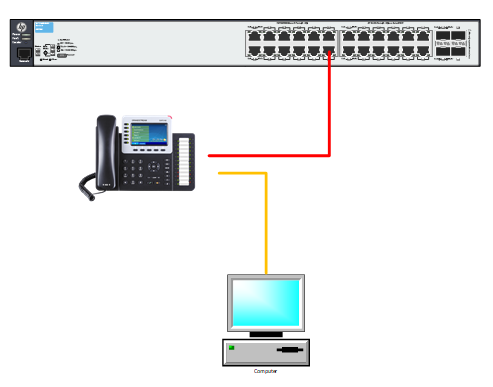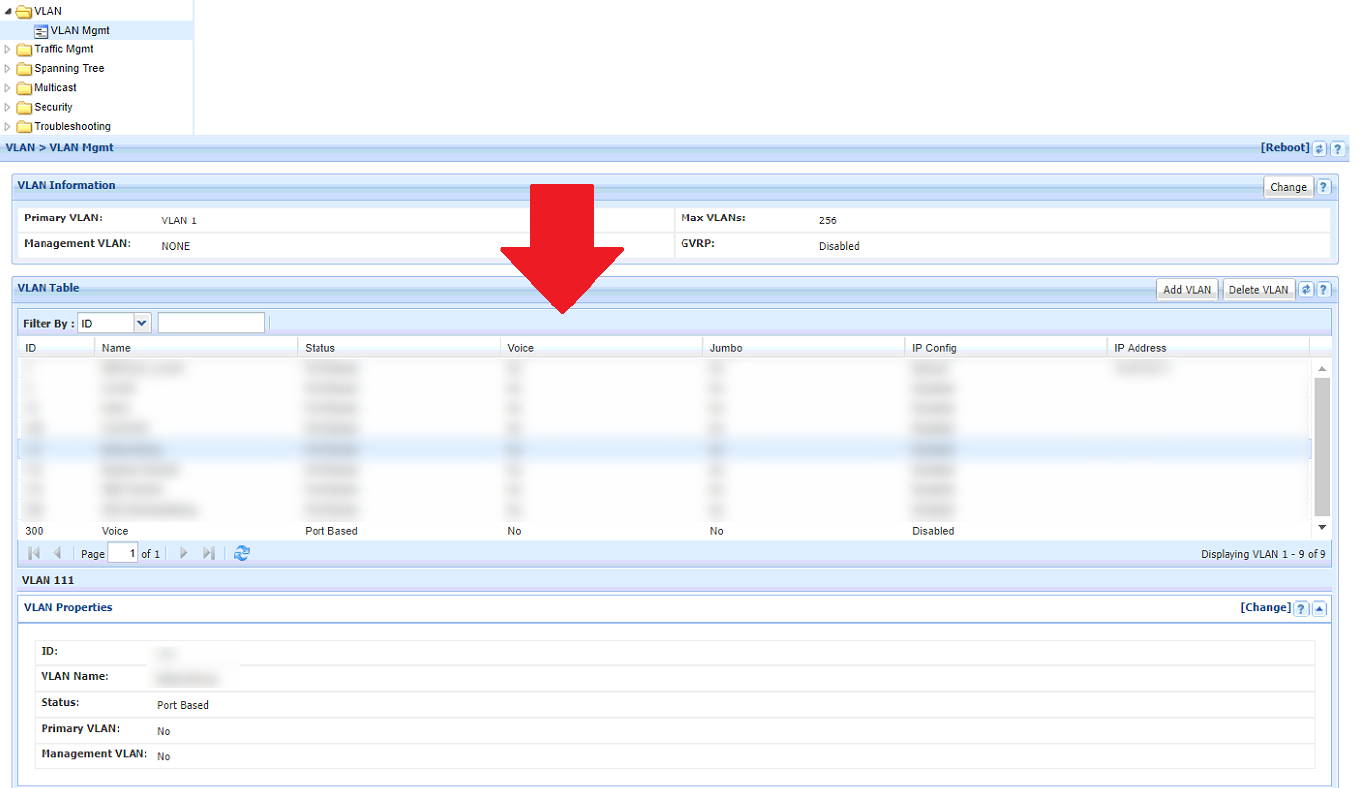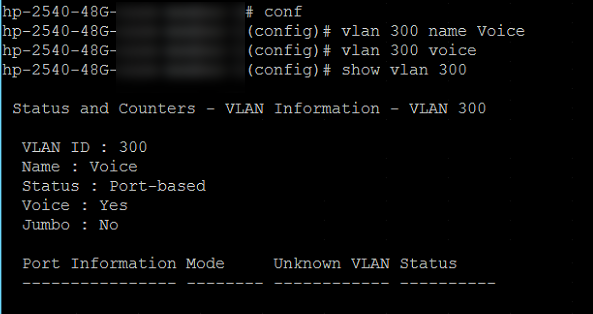When using VOIP Phones you will find that the Ethernet Cable into your network and the Computer both get attached to the Phone.

This setup exists because most of the VOIP Phones have a Two-Port-Switch integrated.

This is resulting to the phone beeing a bottleneck when it has a slow 10/100 MBit/s switch integrated, like the one in the picture above. Also this is resulting in a challange for us, if we want to seperate the phones traffic into a different network then the computers traffic.
This is where Voice V-Lans come into play. The protocols used are LLDP or the Cisco proprietary CDP protocol.
They are capable of identifying the devices behind the port and seperating thier traffic.
Setting up the Voice V-Lans on the switch
In this example I am configuring the Voice V-Lan on a HP 2540-48G-PEO switch. The configuration is simular on Juniper and Cisco.

As you can see from the screeshot above there is already a row for “Voice” in the GUIs V-Lan MGMT area. However it is not possible to make a VLAN become a “Voice V-Lan” using the GUI.
Connect to the switch via SSH. Here we create a V-Lan (if it does not exist already) and make it a Voice V-Lan.

Using the command conf we change into the configuration layer of the CLI. **vlan 300 name Voice** creates a new V-Lan named “Voice”. **vlan 300 voice** defines the vlan 300 as a Voice V-Lan.

This is now also visible in the GUI.
When you are having multiple switches, please remember that the v-lan needs to be able to traverse trunk-ports. Define the v-lan on all switches as voice v-lan and add it as tagged to the trunk ports. If you are unsure what ports that might be, just take a look where the other v-lans are tagged.
Cheers, Ori